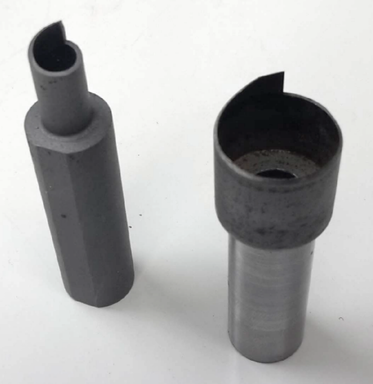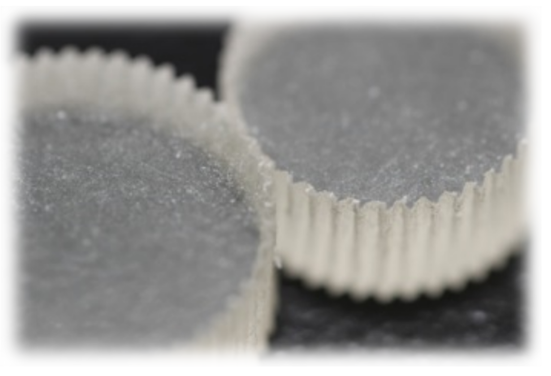Cutting samples out of photoelastic material
Historically the first method to get photoelastic samples [1] was to cut them out of a photoelastic sheet using any blade. This works fine for 2D samples but necessitates skills to cut the sheet without inducing residual stresses. Also, it is quite expensive especially if you consider using Vishay material. In the following section, we go more into detail about the material choice and the different ways to cut it.
Material sheets
Most of the time, photoelastic sheets or pads are made of transparent urethane rubber. But for strong loading you can also consider using plexiglass or polycarbonate. This latter can be bought from any local supplier. Just make sure that they have not been bent or knocked so that there are no residual stresses. If it is the case, you can still get rid of them by annealing them in an oven at ~90 degrees for ~2 hours (a parameter to adapt as a function of the material you use and the amount of residual stresses you have). The same process can be used if residual stresses are induced by the cutting process.
Rubber-like sheets or pads are more dedicated to lower stresses. They are the most used. You can buy them from Vishay which is the most well-known company for photoelastic pads. But companies like Precision Urethane also have a large diversity of sheets and pads of different thickness hardness and color. They are not initially dedicated to photoelasticity but work perfectly well. For the most common use, pads of thickness 1/4'' and of hardness 60A are usually good [1]. Also, if you buy harder material (>70A), because the material can be knocked or folded during the shipping, residual stress can be induced. So be careful to specify to the company that plates must not be folded and must be properly packed.
Cookie cutter method
Circular samples made of a rubber-like material can be cut out using a custom cookie cutter tool. This latter acts as a spinning disk cutter and creates a cylinder of specified diameters with little waste. Examples of such a cutter are described in [1] and reported in the figure below.

It can be rotated using a driller or a milling machine. The rotation and downward speeds have to be properly chosen as a function of the material not to induce residual stresses when cutting. We usually fix the sheet or pad with double-sided tape on a flat plate to make sure the circular samples stay in the same place during the cutting process.
For more details about the cookie-cutter method, you can contact the Duke Physics Machine shop, where this method was originally developed. They also provide photoelastic particle-cutting services.
Milling machine method
For samples more complicated than circular ones, it is also possible to directly use a milling machine and its classical driller. For the same reason as previously, we need to fix the material sheet with double-sided tape on a flat plate. Cutter parameters have to be adapted as a function of the material you cut and the tool you use to minimize residual stresses. Even if it permits increasing the diversity of sample shapes you can reach this method does not provide samples with perfectly smooth edges and waste a lot of material. That is why, when possible you would prefer to use the cookie-cutter method.
We also note that you have to lubricate the cutter with dish soap rather than the usual machine oil, which degrades the polymer for both cookie cutter and milling Machine methods. With good lubrication, it is possible to create particles with smoother edges all the way down, and no frozen-in stresses.
For more details about the milling machine method, you can refer to the Duke Physics Machine shop, where this method was originally developed.
Water jet cutting method
A last method to cut photoelastic rubber-like pads is to use water-jet cutting. This method was first used by [3] and has been developed further in Behringer's lab at Duke University [4]. Just like the previous one, hydro-cutting is a very versatile method that permits to design any sample shape. It permits to get very straight and smooth edges with few residual stresses. Usually for a Precision Urethane pad of hardness 60A and thickness 1/4'', the water-jet is set as 60,000 psi (~410 MPa) with 80 mesh abrasive. ADR Hydro-Cut, Inc. is where Duke University photoelastic samples are usually cut. Below is a picture of geared cylindrical samples obtained with this method. The narrow cutting thickness (~0.1 mm) permits to make very complex edges.
